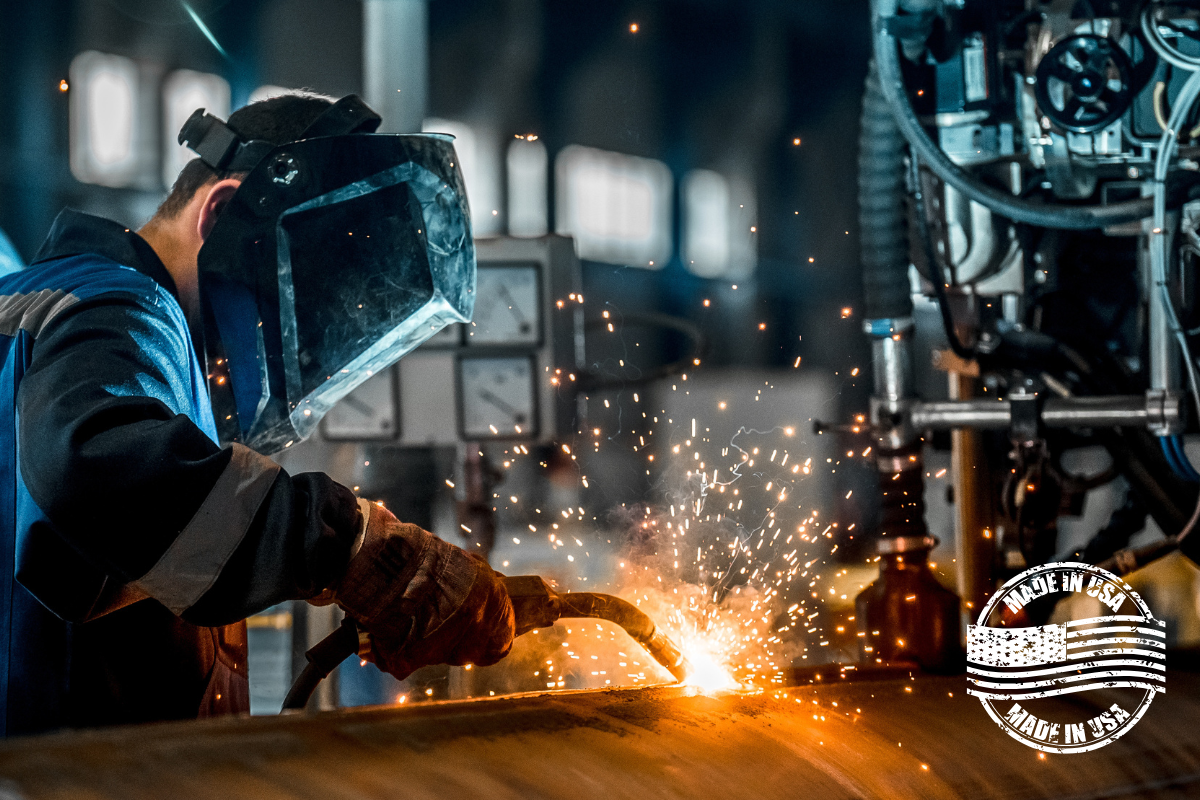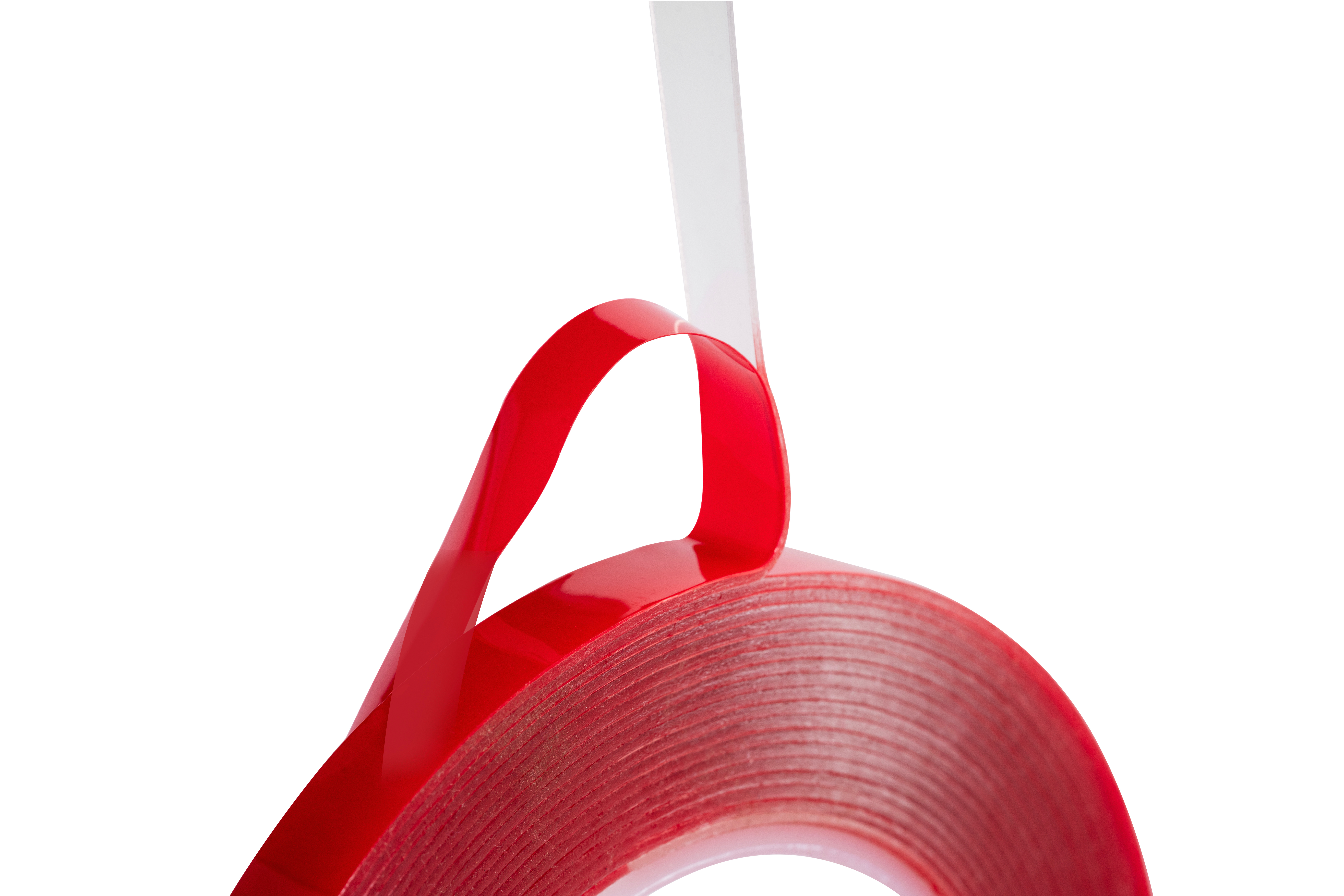
Blind rivets have several advantages over other permanently installed fasteners, such as solid or semi-tubular rivets, clinch fasteners, and traditional nuts and bolts. Because they can be installed from one side of the application, their use is paramount when the back side of an application is limited or non-existent. This also makes them more cost-efficient and versatile than other types of fasteners.
The Basic Elements of Blind Rivets
There are four basic elements to a blind rivet:
- 1. Material
- 2. Diameter
- 3. Grip Range
- 4. Head Style
Blind rivets are available in a wide range of materials, diameters, grip ranges, and head styles, allowing them to be used.png?width=300&height=300&name=Blind%20Rivets%20Blog%20Image%20(1).png) in a wide array of applications. We will explore these elements further and discuss their significance in maximizing joint integrity.
in a wide array of applications. We will explore these elements further and discuss their significance in maximizing joint integrity.
MATERIAL
While most common blind rivets are available in aluminum, steel, and stainless steel, they are also available in copper, brass, and plastic. These softer rivets have become more common with the increased use of composite materials.
A good rule of thumb when selecting a blind rivet is to use the same material rivet as the substrate into which it is being installed. If you are riveting sheets of steel together, use a steel rivet. The same goes for aluminum and stainless steel. This is important because, depending on the environment, using dissimilar metals may result in galvanic corrosion. In cases where this rule cannot be followed, consider using Eck Complete Corrosion Control, which you can learn more about HERE.
Plastic blind rivets work essentially the same as their metal cousins. They require their own installation tooling and tend to dry out and become brittle over time, so careful consideration should be given when selecting them for your application.
DIAMETER
All blind rivets have a recommended hole size into which they can be installed based on the rivet diameter. This is critical because they are designed to expand and pull up within their recommended hole. If the hole is too large, the rivet cannot expand enough to properly fill the hole, resulting in less pull-up and loose joints. If the hole is too small, you will either have trouble fitting the rivet through or result in a shear point forming in the rivet body, which could lead to the rivet shearing off and failing.
GRIP RANGE
This is the total material thickness in which the rivet is designed to work. When specifying a blind rivet, simply follow the manufacturer's guidelines for the total material thickness the rivet is designed to fasten. There will be a minimum and maximum thickness, typically in increments of approximately .060". One of the most common mistakes is using the wrong rivet size for the grip range. This can cause joint degradation, resulting in looseness or malformation of the rivet.
HEAD STYLE
The selection of head style is important not only for the aesthetic of the finished piece but also for considering the strength of the materials being joined. The three most commonly available head styles are Dome Head, Countersunk, and Large Flange.
Dome head rivets are considered the most versatile and are used most frequently because of their low profile and smooth aesthetic appearance. Be aware that some manufacturers use the terms "button" head and "low-profile" head instead of dome head. Both button and low-profile heads are very similar to the standard dome head.
smooth aesthetic appearance. Be aware that some manufacturers use the terms "button" head and "low-profile" head instead of dome head. Both button and low-profile heads are very similar to the standard dome head.
Countersunk rivets are used when a flush surface is desired or required. Different angles of countersunk heads are available. The most common style for standard countersunk blind rivets is a 120-degree countersunk. 82-degree and 100-degree countersunk heads can also be found for some military spec and structural applications.
Large flange blind rivets are typically used to help distribute the stress load when one of the mating materials is ductile, such as composites, wood, fiberglass, and plastics.
Another factor to consider when installing blind rivets is installation tooling. The basics of the installation tool are simple: The tool pulls the stem of the blind rivet up through the rivet body until the pull force of the tool overcomes the tensile strength of the rivet stem, resulting in the stem breaking off at its predetermined breakpoint. The primary consideration for blind rivet installation tooling is accessibility. Certain tools offer greater flexibility in tight spaces than others. There is a wide variety of tools from which to choose. The experts at Austin Hardware can help you select the right tools for your applications.
The Different Types of Blind Rivets:
BREAK-STEM BLIND RIVETS
Break-stem-type rivets are the most common type of blind rivet. They have a hollow core body with an integral mandrel. They can also be further divided into four sub-styles: Open-End, Closed-End, Self-Plugging, and Structural.
- Open-end blind rivets are by far the most common. After installation, an open-end blind rivet retains a small portion of
 the mandrel within the rivet body. This mandrel head does not add structural integrity to the rivet; however, it helps form the backside of the rivet, aids in generating pull-up, and does not provide any sealing characteristics for the blind rivet. This style is ordinarily used in lighter, non-structural applications.
the mandrel within the rivet body. This mandrel head does not add structural integrity to the rivet; however, it helps form the backside of the rivet, aids in generating pull-up, and does not provide any sealing characteristics for the blind rivet. This style is ordinarily used in lighter, non-structural applications.
- Closed-end blind rivets use a solid-core rivet body, thus eliminating the ability of moisture or gases to pass through the rivet body itself, which happens with open-end blind rivets.
- Self-plugging blind rivets refer mostly to multi-grip versions. These variants of the standard open-end blind rivet employ a slightly different mandrel head and rivet body design, with the mandrel stem plugging the hollow body core with a larger portion of the stem. An interference fit results between the mandrel and rivet body, essentially preventing moisture and gases from permeating through the rivet body. However, like open-end blind rivets, the larger retained stem does not normally add to the rivet's structural integrity.
- Structural blind rivets must meet the following criteria: the stem must break flush with the rivet flange (or head) in the minimum and maximum of its grip range, and the stem must be mechanically locked so that it cannot vibrate out of the rivet body after installation. The locked stem thus provides more structural integrity to the rivet, primarily with significantly higher shear values. There are many different types and styles of structural blind rivets available.
Structural blind rivets are required for applications requiring higher load and vibration tolerances. They have higher shear and pull-out strength than standard blind rivets. Many offer a wide grip range, while most have exceptional clamping force. While they’re not quite a replacement for a blind bolt, such as the Huck BOM or heavy hex bolt, they are a great option when a standard blind rivet just will not suffice.
Structural blind rivets have either an internal or external locking mechanism that holds the stem (mandrel) in place. The remaining mandrel increases shear and pull-out strength and provides improved vibration resistance. Additionally, the wide grip ranges offered with multi-grip versions allow them to be used in many applications, helping reduce the number of fastener sizes a manufacturer may need.
The Magna-Lok® is a hole-filling, multi-grip fastener that offers excellent gap pullout and moisture resistance. The locking mechanism is internal and requires no special nose tip on the installation tool.
MULTI-GRIP BLIND RIVETS
Multi-grip rivets are best suited for applications where different material thicknesses typically require several rivet sizes. Avdel’s Avex brand is the original multi-grip blind rivet. POP’s® Multi-Grip™ is another good example. The Monobolt® is also a multi-grip structural blind fastener that provides a fully sealed joint and visible lock.
Huck’s offering includes the HuckLok®, which demonstrates exceptional performance in applications demanding structural strength and vibration resistance, coupled with multi-grip capability in blind-side applications.
Auto-Bulb™ and Magna-Bulb® are both bulbing fasteners with high shear and pullout strength. The former has a tapered lead-in point for automated, high-speed assemblies; the latter offers a broader bearing surface for high pullout strength in thin materials and oversized holes. Similar characteristics can also be found in Avdel’s Avibulb® and Avibulb® XT.

DRIVE-PIN RIVETS
Drive-pin blind rivets have a partial hole in the body and a mating pin that protrudes, positioned in the hole. The installer hammers the pin into the rivet body so that it is flush with the top of the rivet head.
One significant benefit of a drive-pin rivet is that no special tools are required for installation. You can use a hammer if you wish. Drive-pin rivets can also be used with almost any material and do not require a hole to be drilled all the way through to insert.
A drive-pin rivet's disadvantage relative to other types of blind rivets is that a backing block may be needed for installation depending on the material and application, which mitigates the benefit of blind installation. They also offer less clamping force than most other rivet styles.
TRIFURCATING BLIND RIVETS
The trifurcating blind rivet body has slots in the shank, which form "legs" during installation. These legs provide clamping force while spreading the clamp load of the rivet, which is essential when using them in ductile materials such as plastics. They prevent the pull-through of the installed rivet in applications where standard blind rivets would fail. It is the same concept as what is known as a "molly" fastener to hang something in drywall. The increased use of composite materials such as plastic, fiberglass, and plywood has increased demand for blind rivets with different upset styles.
PEEL RIVETS
Another type of blind rivet, known as a peel rivet, employs a concept similar to the trifurcating rivet but with a slightly different mechanism. With Peel rivets, the mandrel is made with knife points under its head, designed to split the rivet body into four sections upon installation. Those sections then expand and peel back, much like the petals of a flower. These petals on the backside of the rivet provide clamping force, which is spread out similarly to a trifurcating rivet. Care should be taken when using peel rivets, as sharp edges are part of the formation. Ideally, there should be no access to the backside of an application where peel rivets are installed.
GROOVED BLIND RIVETS
Grooved Blind Rivets, as the name suggests, have grooves around the body to provide enhanced gripping power for use with softer materials such as wood or plastic. The grooves embed into the material to provide extra holding power.
SOFT SET BLIND RIVETS
Soft Set Blind Rivets are similar to standard rivets but manufactured from softer materials such as aluminum. The mandrel breaks with less force than other blind rivets, making them suitable for use with more brittle materials. Typical applications are metal to plastic, wood, fiberglass, plastic to plastic, or other soft materials of low resistance, such as furniture, packaging containers, or other plastic components.
The major producers of blind rivets, such as Huck, Stanley Engineered Fastening (the makers of the Pop and Avdel brands), and Industrial Rivet & Fastener, offer a myriad of choices. At Austin Hardware, we have relationships with all of these producers and the expertise to help guide you to the right decision for your applications. Contact your Austin Hardware sales representative below or your nearest Austin Hardware location to consult our experts.








